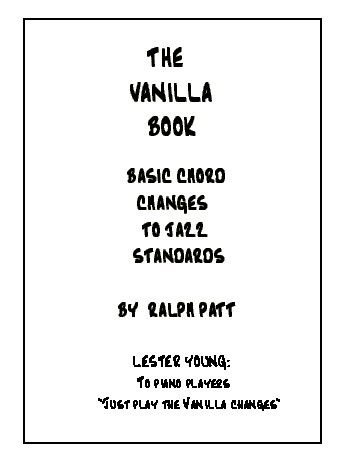Harmonic Analysis (RMA) Worksheet for the song: "Bye Bye Blues".
Harmonic Analysis (RMA) Worksheet for the song: Bye Bye Blues.
Bye Bye Blues is a popular song, written by Irving Berlin in 1926. The song was as a last-minute addition to the Rodgers and Hart musical Betsy. Although the show ran for only 39 performances, "Blue Skies" was an instant success, with audiences on opening night demanding 24 encores of the piece from star Belle Baker. During the final repetition, Ms. Baker forgot her lyrics, prompting Berlin to sing them from his seat in the front row.
Bye Bye Blues is one of many popular songs whose lyrics use a "bluebird of happiness" as a symbol of cheer: "Bluebirds singing a song/Nothing but bluebirds all day long." The sunny optimism of the lyrics are undercut by the minor key giving the words an ironic feeling. (wikiwand);

The Daily Ukulele— 365 Songs for Better Living book.








VI7
( V of II)
Db7 ( bVI7 ) is a better Enharmonic spelling vs. C♯7 #V7 . Heck, the melody in the Yellow book is even written as D♭ — that should have been a big clue.
II7
( V of V)
Fdim A true diminished chord and not a Disguised Secondary Dominant chord.
Lines 1 and 2 repeat.
When repeating a song, create a Turnaround back to the first chord of the song. And there is not better chord then the Dominant V chord of that chord.

Vanillachanges for Bye Bye Blues • The Vanilla Book uncovers the basic ("Vanilla") chord changes to over 400 of the most commonly played jazz
standardsto help the jazz player learn the basic
changesand allow the player to add embellishments and substitutions on a solid framework.
Embellishments to basic chords such as added 6ths, 9ths, 13ths, flat 5ths etc. are usually determined by the melody notes and the style of music being played.

[ C | C | Ab7 | Ab7 |
| C | C | A7 | A7 |
| D7 | D7 | G7 | G7 |
| C | Ebdim | Dm7 | G7 |
|| C | C | Ab7 | Ab7 |
| C | C | A7 | A7 |
| D7 | D7 | G7 | G7 |
| C | Ab7 | C | C |
A Harmonic Analysis (RMA/HA) and its worksheet are intended to show the function of the chords, the harmonic principles used, the keys and tonalities the song explores. And, can be used for scale selections and chord and scale substitutions.
lead leadsheet.Minimal roadmap information such as repeats, fine, D.S., D.C., and codas has been used in preparing the worksheets to somewhat mirror the leadsheet in the Daily Ukulele book.
Yellow Book. You should start to recognize that 1st endings typically always return to a previous verse or an
 section. With a 2nd ending, a transition to a different part of the song, a
section. With a 2nd ending, a transition to a different part of the song, a  or chorus. Harmonic Principles are used for these repeats and transitions.
or chorus. Harmonic Principles are used for these repeats and transitions.- Full Diatonic
- Partial Diatonic • Full Diatonic includes Secondary Dominant chords
- Chromatic

Contemporary Scales: Minor Pent: Minor Pentatonic, Pent: Major Pentatonic, Blues,
Scale/Mode Names: Ion: Ionian (Major), Dor: Dorian (Minor), Phrygian: Phrygian, Lyd: Lydian, Mix: Mixolydian (Dominant), Aeol: Aeolian (Natural Minor), Loc: Locrian


- (wikiwand) Bye Bye Blues
- Les Paul & Mary Ford Bye Bye Blues • from Les Paul Official YouTube Channel
Related Lessons, Videos, Lesson Series, Songs, Books & Reference Charts, Resources & Assets, Workshops are below.

Harmonic Analysis (HA), also known as the study of chord relationships, is the method used to identify the harmonic role of chords within a chord progression or song. A chord progression refers to a sequence of chords, with each chord having a root note and belonging to a specific chord type. The function of a chord within a particular scale's tonality is determined by its relationship to that scale.

Harmonic Analysis is the understanding of the functional sequence of chords. It is the process used to analyze the harmonic structure of a progression, song or composition. This analysis is then used to make scale selections for improvisation and chord substitution.

Strum a different song every day with easy arrangements of 365 of your favorite songs in one big songbook! The Daily Ukulele features ukulele arrangements with melody, lyrics and uke chord grids and are in ukulele-friendly keys that are particularly suited for groups of one to one hundred to play and sing.

Finally, learn the names of the notes of the ukulele fingerboard in C tuning .

Learn the six fingering principles to navigating the ukulele fingerboard. Fingering is one of the most universal topics. Book: Six Secrets of the Ukulele Fingering

Harmonic Analysis is the understanding of the functional sequence of chords. It is the process used to analyze the harmonic structure of a progression, song or composition. Book: Harmonic Analysis for Scale Selection and Chord Substitution

Learn to read single note melodies in the first/open position is a lot easier than you might think. Book: Ukulele – Reading Music Series – Primer

An organized collection of daily practice and reference material for the contemporary ukulele player for developing the vocabulary and knowledge necessary for single note playing. Book: Daily Practice Material for the Contemporary Ukulele
Checkout the Books & Reference Charts for additional Handy, Dandy Reference Charts.

Ukulele Fingerboard Chart for C Tuning, Low or High G – G C E A

Ukulele Fingerboard Chart for G Tuning, Low or High A – D G B E

A handy reference chart of all 15 major and relative minor key signatures. US Letter 8.5 x 11 sized (ANSI-A), A4
Checkout the Books & Reference Charts for additional Handy, Dandy Reference Charts.





.jpg)